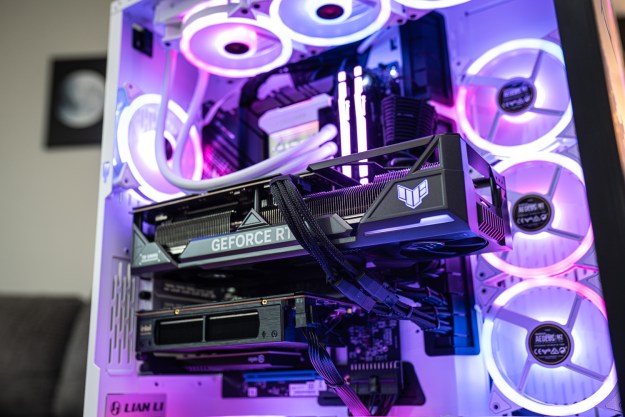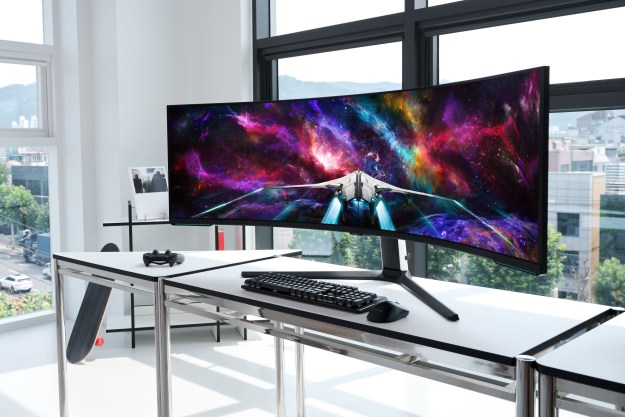Think about what you do when you pick something up. You look at it first, then move and grab. Interacting with computers, or playing a game, works in a very similar manner, but takes longer. You look, then move a cursor using the mouse or touchpad, and tap. Eye-tracking technology company Tobii wants to simplify the process, making interaction faster and more intuitive.
Using Tobii’s eye-tracker made me grin. It’s different, fun, and an experience unlike any other.
Tobii showed me the updated version of its eye-tracking system, mounted inside the MSI Dominator Pro gaming laptop — the first of its kind — with Windows Hello, and the new Assassin’s Creed Syndicate game. The result is technically fascinating, and shows the tech may belong in the gaming world, rather than as an alternate UI control system.
The Tobii system’s capability is far in excess of Hello’s requirements, so unsurprisingly, it worked very well. After snapping an unflattering infra-red picture, the system requires you to be looking at the computer screen from a distance of about 90 centimeters or less. If it sees you, it will simply unlock itself. No passwords, no PINs. Just sit down, and you’re in.
Assassin’s Creed Syndicate better demonstrates Tobii’s ability. I was guided through a few demos, starting with the horse drawn carriage races, where a glance around corners on the screen — with your eyes — re-orientated the camera, giving an early peak at what was to come. It’s something we do naturally when driving or cycling, and is a little like strafing using two sticks on the controller, except using your eyes.
A widely used feature in Assassin’s Creed is the ability to rope-slide between buildings, and targets are selected by centering the camera at the target. With Tobii, that’s not required — you can simply gaze at your target. It’s faster, more accurate, more immersive, and more fun. I could almost feel beams firing out into the screen. The eye-tracking also simplified targeting, as enemies fit for assassination were selected with a look, reducing camera and character movement.
I’d never played the game before, so I didn’t have to relearn any controls already deeply ingrained in my mind. The Ubisoft representative demoing the game knew it inside out, and appeared totally at home with all the new eye-tracking controls. How long had he been using them? I expected him to say weeks or even months. “Two hours,” he told me. I was the first person to see it working.
Controlling your laptop
Outside of the game, this comfort level was reduced. Menus, icons, and other actions in Windows can be performed with a look and a click, removing the need to physically move a cursor. Accuracy was great, making it possible to hit small menu buttons with ease.
But it was also disorienting. It just felt so weird, and when I got into trouble, my hand instinctively went for the mouse to correct the situation. I couldn’t imagine using it often because of this. Those few seconds saved by glancing just didn’t seem worth retraining years of now instinctual finger/touchpad control.
The point that games may represent Tobii’s future isn’t lost on the company, and its latest bar is designed to be very attractive to gamers and gaming peripheral manufactures. It’s smaller, slimmer, and an integral EyeChip takes the pressure off the laptop’s processor, bus, and GPU. This reduces power consumption, and leaves the laptop’s resources free to power the game, rather than the Tobii. The MSI laptop with Tobii eye-tracking will go on sale at the end of January for an as-yet undisclosed price.
Using Tobii’s eye-tracker made me grin. It’s different, fun, and an experience unlike any other. However, it made more sense in a game than on the desktop. I hope to see the gaming-orientated bar find its way into more notebooks this year.
Highs
- Fun to use
- New dimension for game controls
- Windows Hello support
- Updated model doesn’t take PC resources
Lows
- Requires brain ‘retraining’
- Questionable usefulness for UI control





